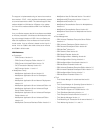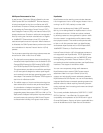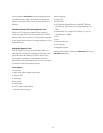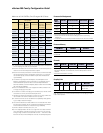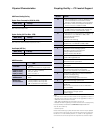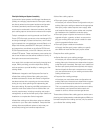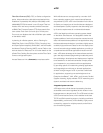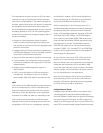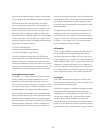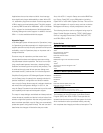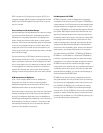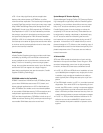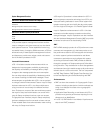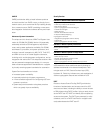62
Fiber Quick Connect (FQC): FQC, a zSeries confi guration
option, helps reduce the cable bulk associated with the
installation of potentially 240 (z800) to 256 (z900) to 420
(z890/z990) ESCON channels in one I/O cage. Fiber har-
nesses, which are factory-installed, enable connection
to IBM’s Fiber Transport System (FTS) direct-attach fi ber
trunk cables. Each trunk can have up to 72 fi ber pairs.
Four trunks can displace the 240 to 256 fi ber optic cables
on the z800 or z900.
In planning for zSeries systems, refer to Planning for:
S/390 Fiber Optic Links (ESCON, FICON, Coupling Links,
and Open System Adapters), GA23-0367, and the Installa-
tion Manual Physical Planning (IMPP) manual. Refer to the
services section of Resource Link for further details on the
zSeries Fiber Cabling Service options and the Fiber Quick
Connect confi guration option.
Access Resource Link at ibm.com/servers/resourcelink.
While zSeries servers are supported by a number of dif-
ferent operating systems, their most advanced features
are powered by z/OS. z/OS is the foundation for the future
of zSeries, an integral part of the z/Architecture designed
and developed to quickly respond to the demanding qual-
ity of service requirements for on demand businesses.
z/OS is the fl agship mainframe operating system based
on the 64-bit z/Architecture. It is designed to deliver the
highest qualities of service for enterprise transactions
and
data, and extends these qualities to new applications using
the latest software technologies. It provides a highly secure,
scalable, high-performance base on which to deploy Inter-
net and Java technology-enabled applications, providing a
comprehensive and diverse application execution environ-
ment. z/OS takes advantage of the latest software technolo-
gies: new object-oriented programming models that permit
the rapid design, development and deployment of applica-
tions essential to on demand businesses. It helps protect
your investment in your present mainframe applications
by providing options for modernizing existing applications
and integrating them with new on demand applications,
all within a single image of z/OS. It provides a solid base
for applications, supporting new technologies such as
Enterprise JavaBeans
™
, XML, HTML, and Unicode, Parallel
Sysplex clustering, highly available TCP/IP networking and
dynamic workload and resource balancing.
Integrated system services
z/OS helps make critical data and processing functions
accessible to end users regardless of their location in the
heterogeneous on demand world. The z/OS base includes
z/OS Communications Server, which enables world class
TCP/IP and SNA networking support, including mainframe
dependability, performance, and scalability; highly secure
connectivity; support for multiple protocols; and effi cient
use of networking assets.
z/OS



